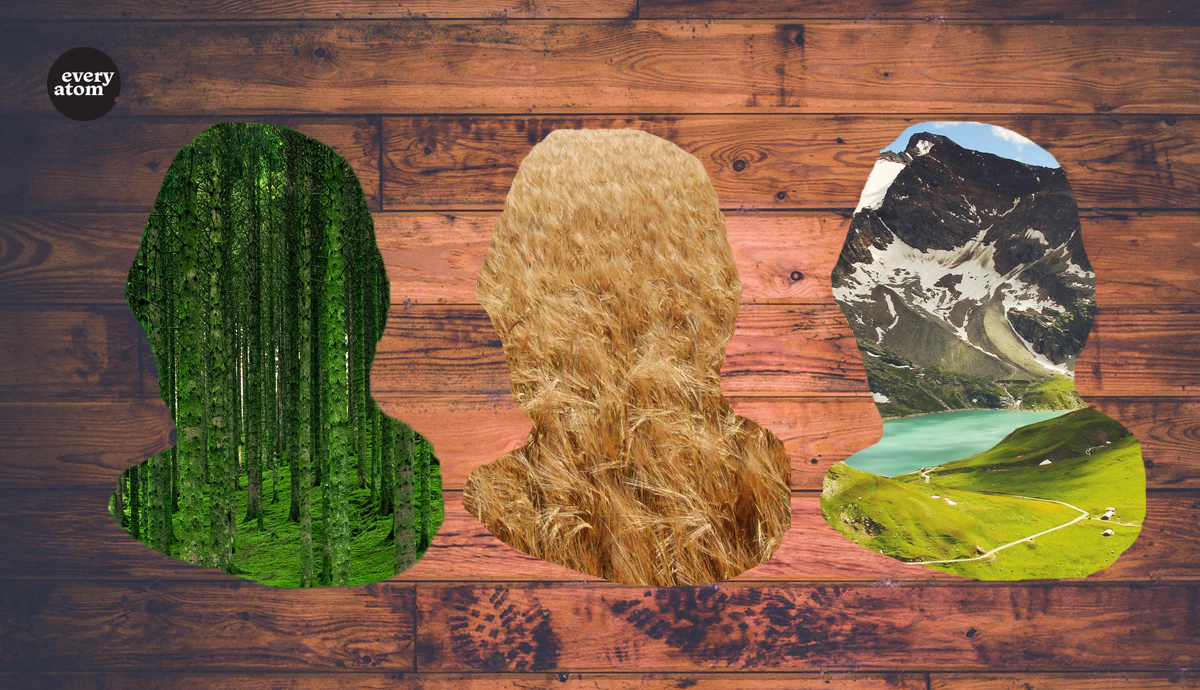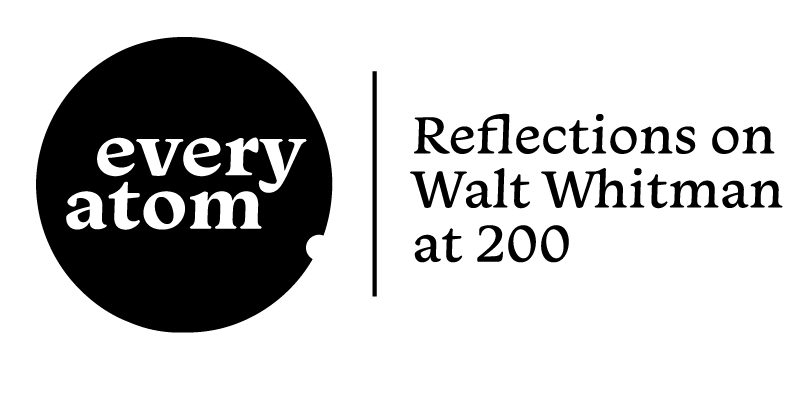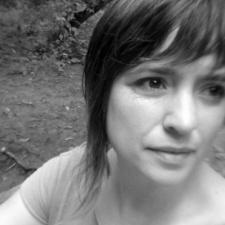Every Atom | No. 89
Introduction to Every Atom by project curator Brian Clements
I’ve been spending time with a Penguin Classics paperback copy of the 1855 Leaves of Grass, and thus with my fourteen-year-old self, who had learned it was a book to be known, and who read part of it. My notes in the margins and my memory tell me I was entranced and not: taken with Whitman’s great catalogues, but perplexed by some of their specifics. I loved his far-ranging lines, and yet I don’t know if I could have been recognized as a fellow traveler by him. Reading him now I find myself searching for the spaces that are in between gender, spaces where I might more easily become one with the poet’s reality, which can be a fetching one. But in many places I’m excluded from that reality, and in many—where the language used to describe women and, especially, people of color doesn’t live up to his avowals about equality or to the newness of the language he finds for other subjects—it’s not a reality I can love.
I appreciate the way Whitman both pushed against and embodied some problematic views of his time, that he challenged them, if only partially; and that this partialness, known to the poet or not, did not stop him from declaiming his principles—Whoever degrades another degrades me—and attempting to enact them. I still love the rollicking lines, the way they can fall into pleasing amphibrachs: The press of my foot to the earth springs a hundred affections. I love all the not-washing and ocean-swimming and closeness to green things.
Though I am in the garden a lot lately and unwashed, and though a perennial love of mine is being in water, the last of these interests me most. How does the plant world—the one that supports us while we work out how to be better to each other, the one under deep threat then and especially now—fare in Whitman’s estimation?
So I made a catalog of the catalog: an enumeration of all the references to plant life in that first edition of Leaves of Grass, the poems as expressed by their green parts only. For some sections, this means no poem at all, but for many it means at least a few phrases. I transcribed references to living plants, to some things made of plant material, and to soil. I included instances that seem actual and metaphorical and both, as well as every instance I read of earth—the capital-E version being, after oceans, mostly plant-covered at least for now.
In the resulting text, of which the part for “Song of Myself” is reproduced here, the elision of overt description of humans and animals makes it clearer how much of the green world is elided by the complete work, despite Whitman’s exuberant love of that world. By rough count, around sixty-five different kinds of plants (broad groups and particular species) are included. Many references are made to settler-colonial and capitalist efforts to control plants and the landscapes they make. There’s an emphasis on crop plants: vivid and mostly innocuous ones—the longleaved corn; the polished breasts of melons—and many mentions of crops that were dependent on slavery—cotton (six references), sugar (four), rice (one). Some plants noted are native to North America; some are introduced species from Europe and elsewhere. There’s an almost-total lack of acknowledgment in the book (with about one-and-a-half exceptions, both of which do violence to their subjects) of Indigenous people’s knowledge of the plant world. There is what feels like a lot of stumps (three) and logs or log houses (four). Though I didn’t include phrases without a word referencing a plant, plant material or action, or soil, there’s a whole lot of building and framing in the book, a great deal of trees gone from their stumps.
But there’s also a near-constant remembering of the green world we’re held in—effulgent, varied, erotic both unto its planty self and as a stand-in for or merging with the human body. The smells or tastes of plants float in on the air (five times). And at least sometimes that world seems to exist for itself as it accrues in Whitman’s vision—to do the work of leaf-making, oxygen-making, ground-holding, without regard for human benefit. To insist on and celebrate and sing itself, as it continues to do every day, even as one in five plant species are threatened with extinction. And the running blackberry would adorn the parlors of heaven. When he turns his eyes on it like this, Whitman reminds us how dear, how necessary, that green stuff is.
Each Leaf
from “Song of Myself,” 1855
*
a spear of summer grass
*
the bank by the wood
loveroot
silkthread
vine
the sniff of green leaves and dry leaves
of hay in the barn
the trees
the supple boughs wag
the fields and hillsides
the earth
the earth
*
*
*
the grass
leaves stiff or drooping in the fields
the little wells beneath them
mossy scabs of the wormfence
elder and mullen and pokeweed
*
the grass
the grass
curling grass
this grass
the smallest sprout
*
the earth
an earth
an earth
*
the bushy hill
*
the dried grass of the harvest-time
the brown gray and green intertinged
wisps
*
the gathered leaves
the twigs of the woodpile
a log
*
*
*
*
the earth
woods
*
the oats and rye
logs
the sugarfield
the cedar-roofed garret
opium
the plains
the wintergrain falls in the ground
the stumps stand thick round the clearing
the cottonwood or pekantrees
*
on earth
on earth
sandhills and pines
up in the bush
the woods
*
the grass that grows wherever the land is and the water is
the globe
*
*
the woods
*
the ground but wallow and filth
a barleycorn
a burnt stick
*
the earth and sea
O voluptuous coolbreathed earth
earth of the slumbering and liquid trees
earth
earth
earth
earth
earth
earth
rich apple-blossomed earth
*
the roots of all that has grown
*
stonecrop
cedar
branches of lilac
*
beetles rolling balls of dung
root of washed sweet-flag
mixed tussled hay of head and beard and brawn
trickling sap of maple, fibre of manly wheat
broad muscular fields, branches of liveoak
a morning-glory
the air tastes good
the earth
*
how the buds beneath are folded
waiting in gloom protected by frost
the dirt receding
*
the bustle of growing wheat
clack of sticks cooking my meals
fruit
honeyed morphine
*
*
pasture fields
*
sprouts take and accumulate
stand by the curb prolific and vital
landscapes projected masculine full-sized and golden
*
the soggy clods
a summit and flower there is the feeling they have for each other
*
a leaf of grass
the running blackberry
long-threaded moss and fruits and grains and esculent roots
the creepers and logs
the inner passes of the woods
*
the whole earth
*
the grass
log-huts
the dry gulch
my onion-patch, and rows of carrots and parsnips
savannas
forests
the trees of a new purchase
a limb overhead
roots
the growing sugar
the cottonplant
the rice in its low moist field
slender shoots from the gutters
the western persimmon
the longleaved corn and the delicate blue-flowered flax
the white and brown buckwheat
the dusky green of the rye as it ripples and shades in the breeze
low scragged limbs
the path worn in the grass and beat through the leaves of the brush
betwixt the woods and the wheatlot
the roots of the old tree
the meadow
the horse-block of hard wood outside
at the cider-mill
the sweet of the brown sqush
at apple-peelings
all the red fruit
huskings
the dry-stalks are scattered
the limitless and lonesome prairie
the garden
the high weeds
icicled trees
the marsh
the walnut-tree over the well
patches of citrons and cucumbers with silver-wired leaves
orange glade
conical firs
my back yard
the orchards of God
the spheric product
quintillions ripened
quintillions green
the globe
dry wood
the fence
the weeds
the beams
the rent roof
wood
*
the dirt
*
mainmast
decks
the maintop
*
smells of sedgy grass and fields by the shore
*
the stump
*
the blossoms we wear in our hats are the growth of two thousand years
*
prairie life or bush-life
grass
*
earth
the cottonfields
*
harvest
dung and dirt more admirable than was dreamed
*
the reeds within
that thorned thumb
the chaff
the wheat
*
stump
sticks
the woods
mead
the earth
the earth
*
vast vegetables
*
flowerbeds or vines or tangled underbrush
soft and balsamic busses
*
a staff cut from the woods
a plank
*
the oar
the field
*
the pick of the earth
a bean in its pod
*
good manure
the white roses sweetscented and growing
the leafy lips
the polished breasts of melons
O grass of leaves
the autumn forest
the black stems that decay in the muck
the moaning gibberish of the dry limbs
*
the earth
*
wilt
*
the grass
Recommended
Nor’easter
Post-Op Appointment With My Father
Cedar Valley Youth Poet Laureate | Fall 2024 Workshop







